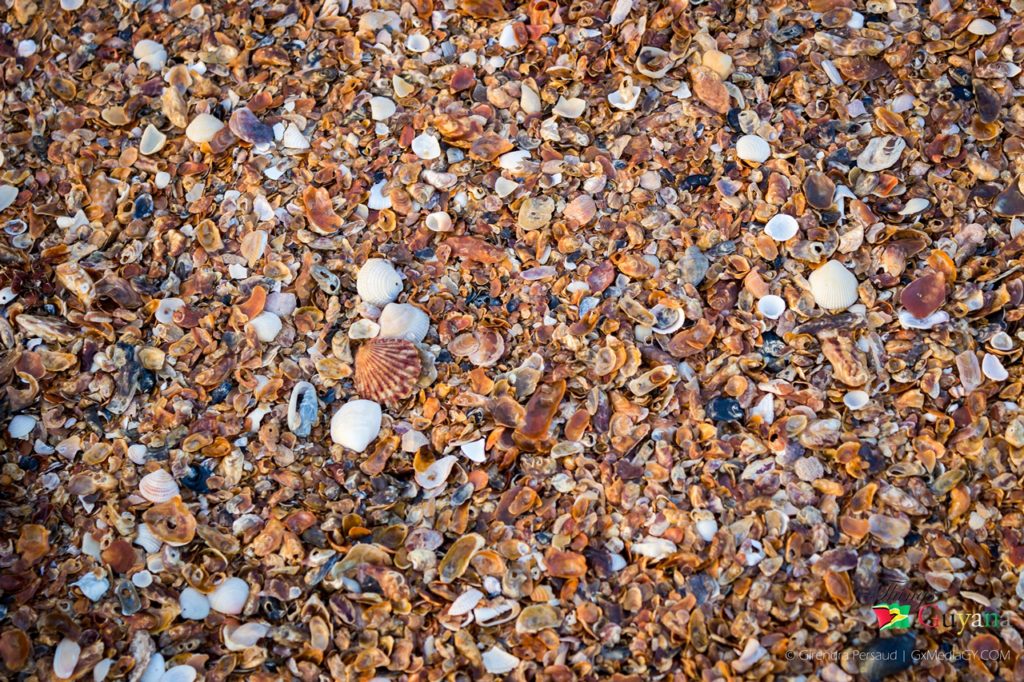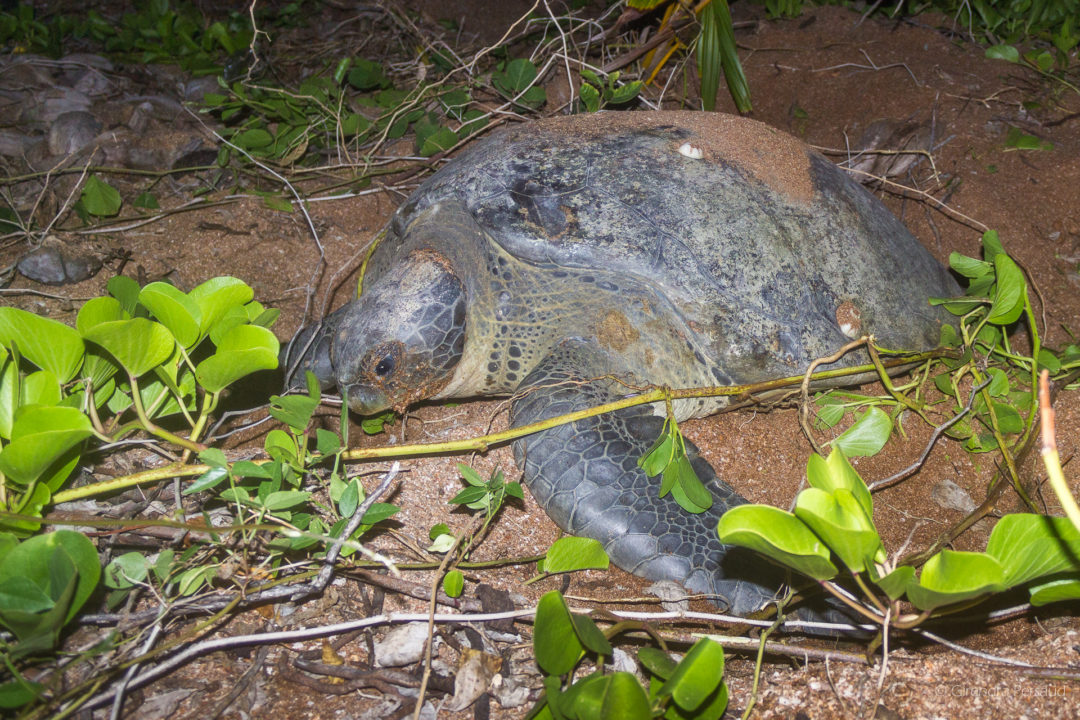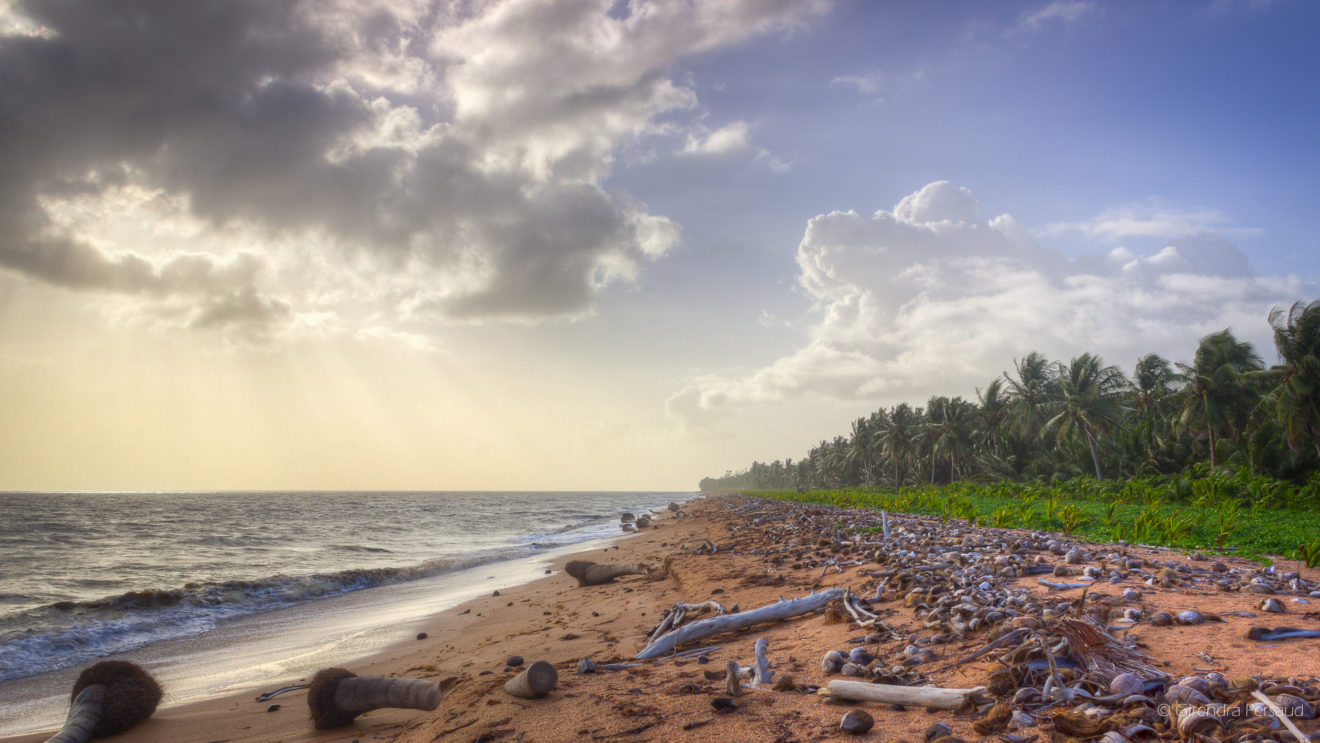Is it because it has an abundance of turtle-egg shells or coconut shells? It turns out to be none of those reasons. The beach is literally made of shells. Take a closer look at the image below and you will see what we are talking about.

Shell Beach, located on the North Atlantic Coast of Guyana in the Barima-Waini Region, near the Venezuelan border (You can stand on the beach and see coast of Venezuela to the West), is a nesting site for four of the eight sea turtle species – the Green, Hawksbill turtleill, Leatherback and the Olive Ridley. Shell Beach originally extended for approximately 145 km, but because of rising tides and global warming the beach has been shrinking to less than half this size in recent times.

These exquisitely massive reptiles arrive from March to August every year during the night to lay their eggs.
Turtles used to be slaughtered for their meat and eggs. The area is now part of a non-governmental conservation program called the Guyana Marine Turtle Conservation Society (GMTCS), founded by Dr. Peter Pritchard and Romeo De Freitas. Shell Beach is not formally protected, although direct and indirect conservation activities to protect the nesting sea turtles started in the 1960s, when Dr. Peter Pritchard first began annual research visits. Due to his efforts to conserve the turtles in the region, Dr. Peter Pritchard was dubbed “Hero of the Planet” by Time.
Amerindians from the local communities of Almond Beach and Gwennie Beach are involved in the programme.
The role of the sea turtle should not be underestimated as they play a vital role in maintaining the balance of the marine eco-system. The turtles along with manatees consume seagrass thereby keeping it short. It is imperative that this grass is short as would prove to be a conducive breeding ground for other aquatic life.
Traveling to this natural landmark is quite a task and an adventure all the same. Once you arrive there, you would easily notice the thousands of small pieces of broken shells covering the spectacular beach, hence its name.
The video above documents a trip to Shell Beach by river from Charity (Essequibo Coast).
During the night, turtles can be seen making their way onto the shore. They then use their flippers to create craters that are almost two feet deep on the beach and proceed to lay from 50 to 200 legs depending on the species. They then cover it with sand and head back to the ocean. The eggs take about two months to hatch.
The conservation programme allows for the protection of the turtles and their eggs until they are hatched and are assisted to the ocean. The three main donor agencies which have been faithfully supporting the project from the beginning are Chelonian Research Institute, Simpson Oil Limited Inc. (earlier Shell Antilles-Guyana) and the World Wildlife Funds.
According to the GMTCS, the turtle population over the years had developed and data analysis of nesting females had also expanded. But it is still a challenge to reduce the instances of human activities such as fishing in the nearby coastal waters and in front of nesting beaches, which contribute to the loss of many adult turtles that had been caught accidentally and drowned in nets.
But Defreitas has reported that nature had also played a major role in redesigning the nesting habitat by erosion, some of which becomes wonderful nesting spots, while others have been blocked by mud bars and become unsuitable for nesting. He is of the opinion that these natural causes lent to many of the disadvantages the endangered turtles face during their nesting period, especially those that may venture to other beaches, unprotected by rangers and suffer the consequences by the hands of the local fishermen.
Moreover, GMTCS today, still holds steadfast to its commitment to record and tag marine turtles, ensure data collection on all monitoring activities, and promote its annual Education Awareness program.
Special programs have also been initiated to improve the capacities of rangers. It is being conducted by the GMTCS and other agencies, such as The Environmental Protection Agency’s (EPA), Protected Area Commission, WWF, Iwokrama, Repsol and the Guyana Defence Force Coast Guard.
De Freitas had called on all stakeholders especially from the local fishing communities to support the conservation efforts and avoid the practice of turtle eggs harvesting and killing of the adult female turtles, and even the purchasing of the meat and eggs within the communities.
While it was without any legal protection for some time, the magnificent beach has been classified as a Protected Area, with robust legislation that prohibits the removal of the endangered species from within that area.
In April 2017, authorities have ordered the Shell Beach Protected Area closed to all tourism activities due to major floods in the area. The beach was subsequently reopened in mid-July of that year after the flood waters receded.
If you would like to visit Shell Beach, see here: https://www.utadventures.com/shell-beach-guyana/
Article References:








2 Comments